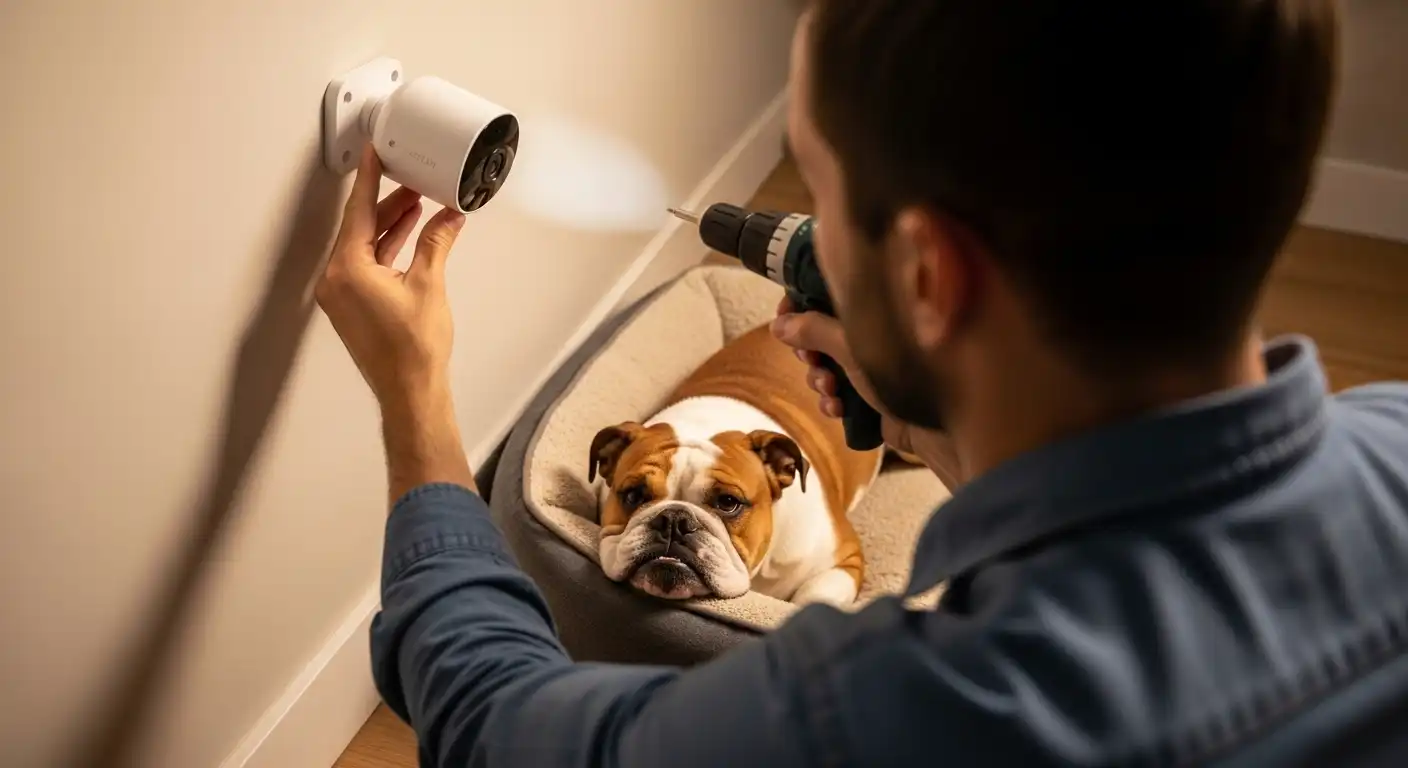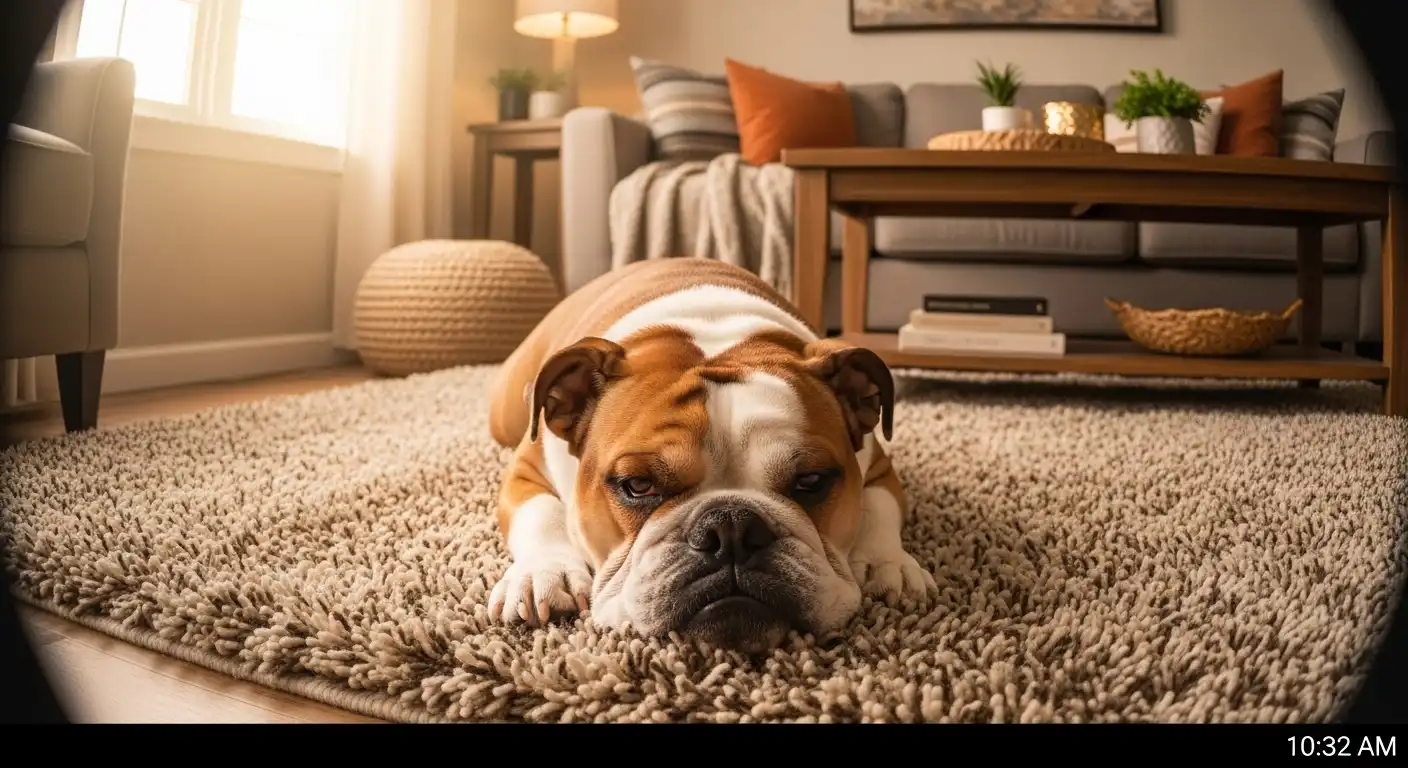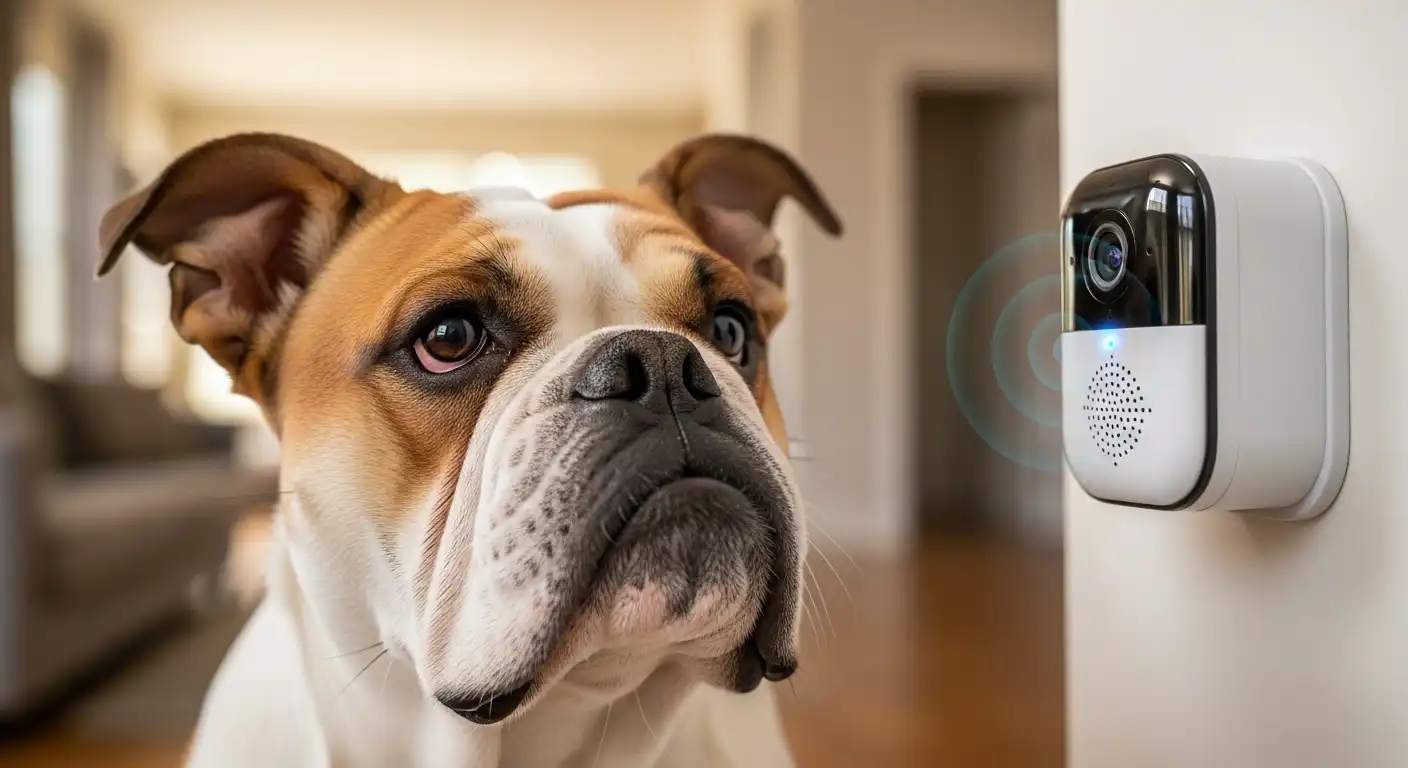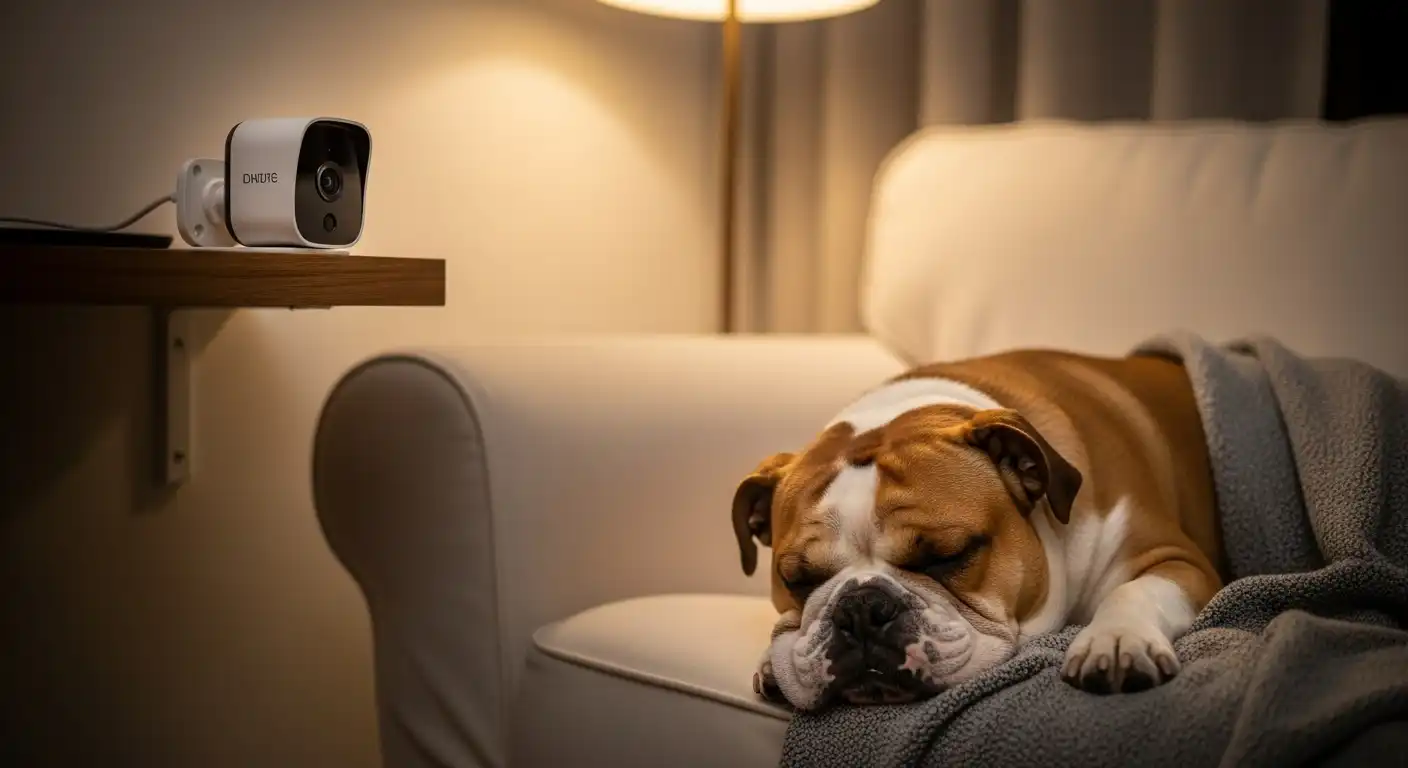Leaving your Continental Bulldog alone at home can cause anxiety — for both of you. Bulldogs are known for their affectionate nature and their tendency to form strong bonds with their owners. This makes separation especially difficult. Fortunately, modern remote monitoring cameras for Bulldogs allow you to check in on your pet from anywhere, ensuring safety, comfort, and peace of mind.
In this long-form guide, we’ll explore everything you need to know about setting up home cameras and smart monitoring for your Bulldog: from choosing the right gear and understanding your dog’s behavior, to integrating alerts with smart home systems. Whether you live in an apartment or a large home, this guide helps you create a safe, monitored space for your furry friend.
Why Remote Monitoring Matters for Bulldogs
Continental Bulldogs are calm yet sensitive dogs. They can easily develop anxiety when left alone for long hours, or struggle with heat and breathing conditions common in brachycephalic breeds. Remote monitoring gives you the ability to respond early to potential issues like stress, overheating, or injury.
- Health monitoring: Spot early signs of respiratory distress, overheating, or excessive panting.
- Behavior observation: Identify pacing, whining, or destructive behavior that may signal separation anxiety.
- Emergency awareness: Get motion or sound alerts if your dog barks excessively, knocks something over, or a break-in occurs.
- Two-way reassurance: Speak to your Bulldog remotely, easing their stress with a familiar voice.
- Peace of mind: Real-time monitoring reduces owner anxiety, knowing your pet is safe and comfortable.
According to Forbes’ 2025 pet tech review, pet cameras are one of the fastest-growing segments of home smart devices. They’re no longer just novelty gadgets — they’re tools that can prevent medical emergencies and improve animal welfare.

Key Features to Look For in Bulldog-Friendly Cameras
Not all cameras are made equal. Bulldogs have specific needs — short muzzles, potential respiratory issues, and moderate activity levels — meaning you need gear that captures details clearly and integrates safely in your home environment. Here’s what to prioritize:
1. Resolution and Clarity
A camera with at least 1080p (Full HD) resolution is a must. Higher resolutions like 2K or 4K allow you to detect subtle signs of discomfort — a change in breathing pattern or posture that might otherwise go unnoticed.
2. Wide Angle and Pan-Tilt Features
Choose a device that can rotate or tilt to cover the entire room. Bulldogs often rest in corners or move between zones, so a static view might miss key moments.
3. Motion and Sound Detection
Smart detection helps differentiate between your dog’s natural movement and other background changes. Adjustable sensitivity prevents false alerts caused by light or curtains moving.
4. Two-Way Audio
Being able to speak to your Bulldog through the camera helps reduce stress and strengthens your bond. Just use it sparingly — overuse can cause confusion if your dog cannot physically see you.
5. Night Vision
Many Bulldogs nap during the day and become alert at night. Infrared or low-light cameras help you see clearly even in dark rooms without disturbing your dog’s rest.
6. Reliable Storage Options
Cloud-based storage ensures footage isn’t lost if your device is damaged. Some systems offer hybrid options — local SD backup with cloud sync — for extra reliability.
7. Privacy and Security
Pet cameras connect via Wi-Fi, which makes cybersecurity vital. Select a brand with strong encryption, two-factor authentication, and regular firmware updates to protect your data.
8. Integration with Smart Homes
Integrate your camera with smart thermostats or smart plugs. For example, if your Bulldog starts panting heavily, you can trigger your AC or fan remotely to reduce room temperature.
Setting Up Your Bulldog Monitoring System
Installing cameras properly makes all the difference. Placement, lighting, and connectivity affect how accurately you can track your pet’s behavior.
Step 1: Choose Strategic Camera Locations
Identify your Bulldog’s favorite resting zones — bed, crate, play area, or near windows. Place one camera in each critical zone, or use a rotating camera to cover multiple areas. Avoid pointing directly at reflective windows to reduce glare.
Step 2: Ensure a Stable Internet Connection
A strong Wi-Fi signal is essential for uninterrupted streaming. Run a speed test in each room before installation. If the signal is weak, consider mesh Wi-Fi systems or extenders.
Step 3: Mount at Correct Height and Angle
Position the camera around your chest level and tilt slightly downward to keep your Bulldog in full frame. Avoid placing too high, as it limits detail visibility, especially of facial cues.
Step 4: Define Motion Zones
In your camera’s mobile app, mark activity zones such as the dog bed or crate. This minimizes notifications triggered by background motion (like curtains or light changes).
Step 5: Test Before Long Use
Do a few short trial sessions while you’re nearby. Leave your Bulldog alone for an hour, monitor reactions, and adjust settings accordingly before longer absences.

Understanding Bulldog Behavior Through the Camera
Live feeds offer more than visual comfort — they provide behavioral data. By tracking patterns, you can improve your dog’s mental and physical health.
- Rest vs. Activity: Bulldogs generally nap several hours daily. Excess pacing or restlessness can indicate anxiety or environmental discomfort.
- Panting Patterns: Heavy panting while idle often signals overheating or respiratory stress. Turn on fans or lower room temperature immediately.
- Body Language: Watch for pinned ears, yawning, or licking lips — these can indicate anxiety or boredom.
- Vocalizations: Continuous barking or whining suggests separation anxiety. You can address this with gradual desensitization training.
- Appetite and Hydration: Some smart bowls sync with monitoring apps, alerting you if your dog stops drinking or eating while alone.
Creating Behavior Logs
Many apps allow you to tag clips or take snapshots. Save these moments — over time, you can share consistent data with your veterinarian or trainer to detect early health changes.
Common Mistakes to Avoid
- Overchecking the feed: Constantly opening the live view can reinforce your own anxiety and confuse your dog if you talk too often through the speaker.
- Neglecting privacy settings: Always update passwords and limit device sharing. Unsecured cameras can be exploited if ignored.
- Ignoring lighting: Poorly lit rooms reduce image clarity. Ensure indirect light sources for optimal footage quality.
- Relying only on video: Cameras are helpful, but they don’t replace in-person care. Check your Bulldog physically for signs of allergies, skin irritation, or dehydration.
Bulldog-Specific Health Benefits of Remote Monitoring
Because Continental Bulldogs belong to the brachycephalic group, they are more prone to breathing and overheating risks. Remote cameras provide early warnings that can literally save lives.
- Overheating Prevention: Some devices include temperature and humidity sensors, alerting you if conditions rise above safe levels (around 26–28°C).
- Obesity Management: Track how often your dog moves daily. Lack of activity may indicate the need for more playtime or adjusted feeding portions.
- Joint Health: Bulldogs may have hip or knee issues. If you notice frequent repositioning, limping, or reduced activity, schedule a vet check.
Integrating Cameras with Other Smart Devices
Combine your monitoring camera with other connected devices to build a responsive, pet-safe ecosystem:
- Smart Thermostats: Automatically lower the temperature when the room exceeds 27°C.
- Smart Lighting: Adjust ambient light to mimic daylight cycles, which can stabilize your dog’s mood.
- Pet Doors: Use camera motion triggers to open or close smart doors within your fenced area (for potty breaks).
- Feeding Systems: Schedule meal times or treat dispensing based on motion alerts when your Bulldog becomes active.

Real-World Stories: Bulldogs and Remote Cameras
Case 1: Preventing Heatstroke
A family in Arizona installed a Furbo camera with a built-in temperature sensor. One summer afternoon, an alert notified them of rising heat levels. The Bulldog was panting excessively. They remotely activated their smart fan and returned home — their vet later confirmed early heat distress had been avoided.
Case 2: Solving Separation Anxiety
Another owner used two-way audio gradually, starting with short departures. By speaking calmly through the camera and offering treats upon return, their Bulldog learned to relax when alone. Within two weeks, whining decreased by 80 percent.
Case 3: Understanding Nocturnal Behavior
One couple discovered through night vision footage that their Bulldog frequently woke at 3 a.m. to scratch near a vent. The cause was cold air drafts — once they blocked it, nighttime restlessness vanished.
Recommended Camera Brands (2025)
While you should choose based on budget and space, here are some highly rated, pet-safe options:
- Furbo 360 Dog Camera: Treat toss, 1080p, AI bark alerts, night vision.
- Wyze Cam Pan v3: Budget-friendly, 2K resolution, full rotation, sound alerts.
- TP-Link Kasa EC70: 1080p pan/tilt with app control, integrates with Alexa/Google.
- Arlo Essential Indoor Cam: Excellent video, privacy shutter, and subscription cloud storage.
For detailed reviews of the top devices this year, see Forbes’ Best Pet Cameras of 2025.
Integrating Monitoring into Daily Bulldog Care
Technology only works when it supports consistent routines. Combine your camera use with a solid daily care plan:
- Morning Routine: Quick camera check while leaving home; ensure your Bulldog has fresh water, proper ventilation, and toys.
- Midday Monitoring: Review motion alerts or short clips. If anxiety or restlessness appear, schedule playtime later.
- Evening Recap: Save snapshots of your Bulldog’s calm moments to track progress over time.
By aligning camera data with daily observations, you’ll develop an intimate understanding of your dog’s comfort and health cycles.
Conclusion: Smarter Monitoring, Happier Bulldogs
Remote monitoring cameras have evolved from luxury gadgets into essential tools for pet safety. For Bulldog owners, they’re especially valuable — helping prevent heat stress, anxiety, and accidents. When paired with good training, balanced nutrition, and smart environmental control, your Continental Bulldog can thrive even while you’re away.
Start simple: install one camera, learn your Bulldog’s patterns, and build from there. Over time, you’ll gain insights that make both your lives calmer and safer.
Action Tip: Explore the Forbes Pet Camera Guide to choose your first device — then set it up this week to see how your Bulldog behaves when you’re not home.

